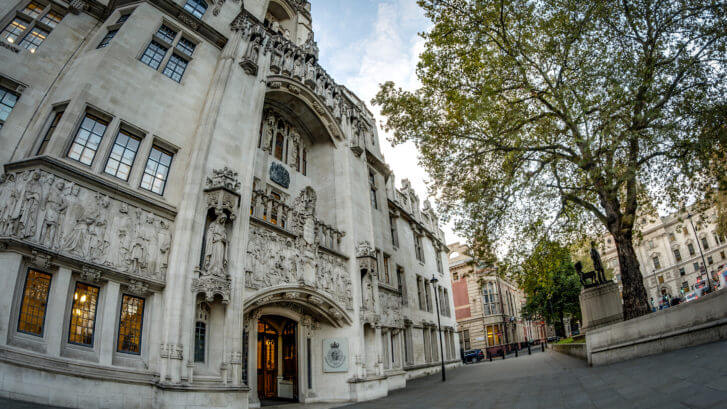Richard Reichman considers the Supreme Court decision in HM Inspector of Health & Safety v Chevron North Sea Limited regarding appeals against prohibition notices.
The Supreme Court has handed down its judgment in the case of HM Inspector of Health & Safety v Chevron North Sea Limited, regarding the appropriate test on appeal against a prohibition notice. The judgment, from the UK’s final court of appeal, was awaited with interest as there has been a scarcity of case law regarding this significant statutory power.
Prohibition notices are frequently issued by inspectors during investigations (nearly 10,000 were issued by the HSE and local authorities in 2016/17) under s.22 of the Health and Safety at Work Etc. Act 1974 (“the Act”). They prohibit workplace activities until specified matters are addressed when “an inspector is of the opinion that, as carried on or likely to be carried on…the activities involve or, as the case may be, will involve a risk of serious personal injury”.
Prohibition notices have serious implications; they can temporarily, or even permanently (due to prohibitive cost implications), stop a business from operating. Notices are published on the HSE’s website (‘Enforcement Notices Area’) and therefore can carry reputational risks, including affecting the ability to successfully tender for work. They can also have important implications in prosecutions against the recipient, for example, they can be relevant to a defendant’s character or previous safety record when sentenced. Breach of the requirements in a notice is a criminal offence.
There is an important appeal mechanism against both prohibition and improvement notices under s.24 of the Act. The right of appeal is, somewhat unexpectedly, to the Employment Tribunal, which may “cancel or affirm the notice”. The tribunal can affirm the notice with such modifications as it thinks fit in the circumstances.
The Chevron case related to an appeal against a prohibition notice which was served on the operators of an offshore installation used for processing crude oil. The main mode of access to, and egress from, the installation was by helicopter and an inspector deemed the stairways and staging leading to the helipad (constructed of steel grates and steel treads) to be unsafe. Following service of the prohibition notice, the operator independently tested the stairways and staging. All test results which could be obtained met the appropriate British Standard requirement.
The tribunal in the Chevron case found that they should not close their eyes to later matters (i.e. subsequent testing) in determining the risk which existed at the time that the notice was served. This view was contrary to the Court of Appeal’s June 2015 decision in HM Inspector of Health and Safety v Rotary Yorkshire Limited that a tribunal is only concerned with “the facts which were known or ought to have been known to the inspector at the time of the decision”.
On appeal by the HSE, the Scottish Court of Session endorsed the approach of the tribunal in the Chevron case, finding that “whatever competent information is available at the time of the tribunal’s hearing on the appeal” could be used to determine if the factual content of the notice was wrong (irrespective of how reasonable the inspector’s opinion was at the time).
The Supreme Court was therefore required to address the different approaches between the UK (Rotary Yorkshire) and Scottish (Chevron) appeal Courts. The Supreme Court unanimously dismissed the HSE’s appeal, finding that a tribunal in an appeal could consider “all the available evidence relevant to the state of affairs at the time of the service of the prohibition notice, including information coming to light after it was served” (Lady Black, paragraph 24). The Supreme Court stated that an appeal is against the notice itself, rather than the inspector’s opinion. In justifying a wide interpretation of s.24, the Supreme Court noted the potential for a prohibition notice to cause financial and reputational harm, force an employer to “carry out unnecessary works” and expose an employer to the possibility of criminal proceedings.
With a background of rapidly increasing fines (£69.9 million total fines in 2016/17) and serious implications for a recipient of a notice, this judgment is likely to make appeals against both prohibition and improvement notices more common in the future.
If you’d like to discuss any of the issues raised in this article with one of our solicitors then please get in touch in the strictest confidence.

